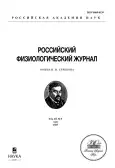Possibilities and limitations of using the olfactory bulb removal model in rodents
- 作者: Nedogreeva O.A.1, Stepanichev M.Y.1
-
隶属关系:
- Institute of Higher Nervous Activity and Neurophysiology, Russian Academy of Sciences
- 期: 卷 111, 编号 5 (2025)
- 页面: 639-658
- 栏目: REVIEW
- URL: https://bakhtiniada.ru/0869-8139/article/view/304885
- DOI: https://doi.org/10.31857/S0869813925050013
- EDN: https://elibrary.ru/toiyoi
- ID: 304885
如何引用文章
详细
Here, we review current data that provide a basis for using the olfactory bulbectomy model as a model of mental disorders in humans. Based on extensive literature and our own data, we have shown the possibilities of using the olfactory bulbectomy model in rodents as a model of depression and Alzheimer's disease, taking into account the correspondence of the observed changes with modern criteria of validity. The removal of olfactory bulbs causes a complex of molecular, structural, and behavioral changes in animals, which cannot serve as an ideal model for certain disease. The review discusses the limitations of using this model and interpreting the results. Nevertheless, this model can be a useful tool for both basic and applied studies of brain pathologies, taking into account these limitations.
作者简介
O. Nedogreeva
Institute of Higher Nervous Activity and Neurophysiology, Russian Academy of Sciences
Email: nedogreewa_olga@gmail.com
Moscow, Russia
M. Stepanichev
Institute of Higher Nervous Activity and Neurophysiology, Russian Academy of Sciences
编辑信件的主要联系方式.
Email: nedogreewa_olga@gmail.com
Moscow, Russia
参考
补充文件









